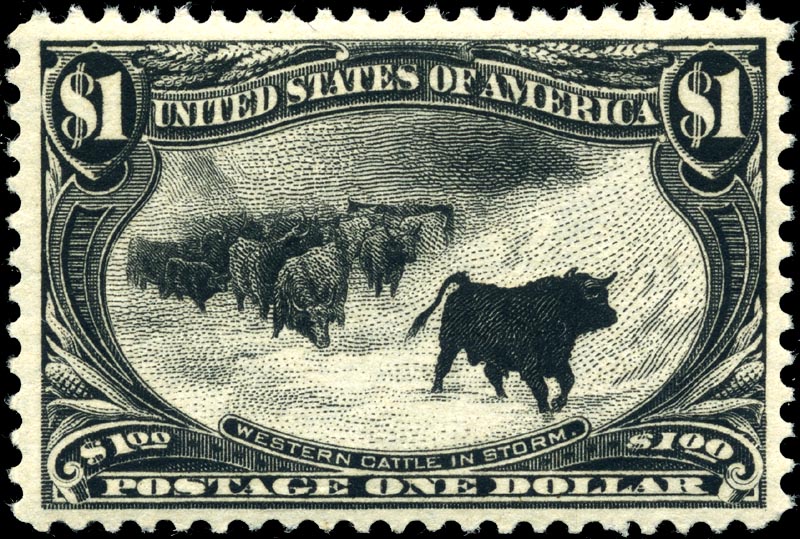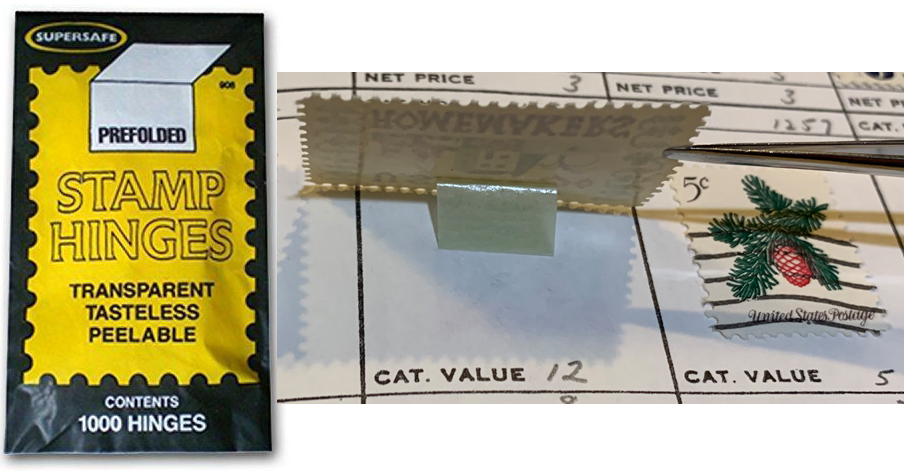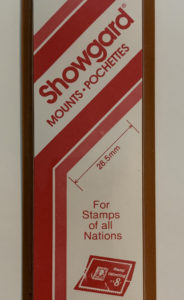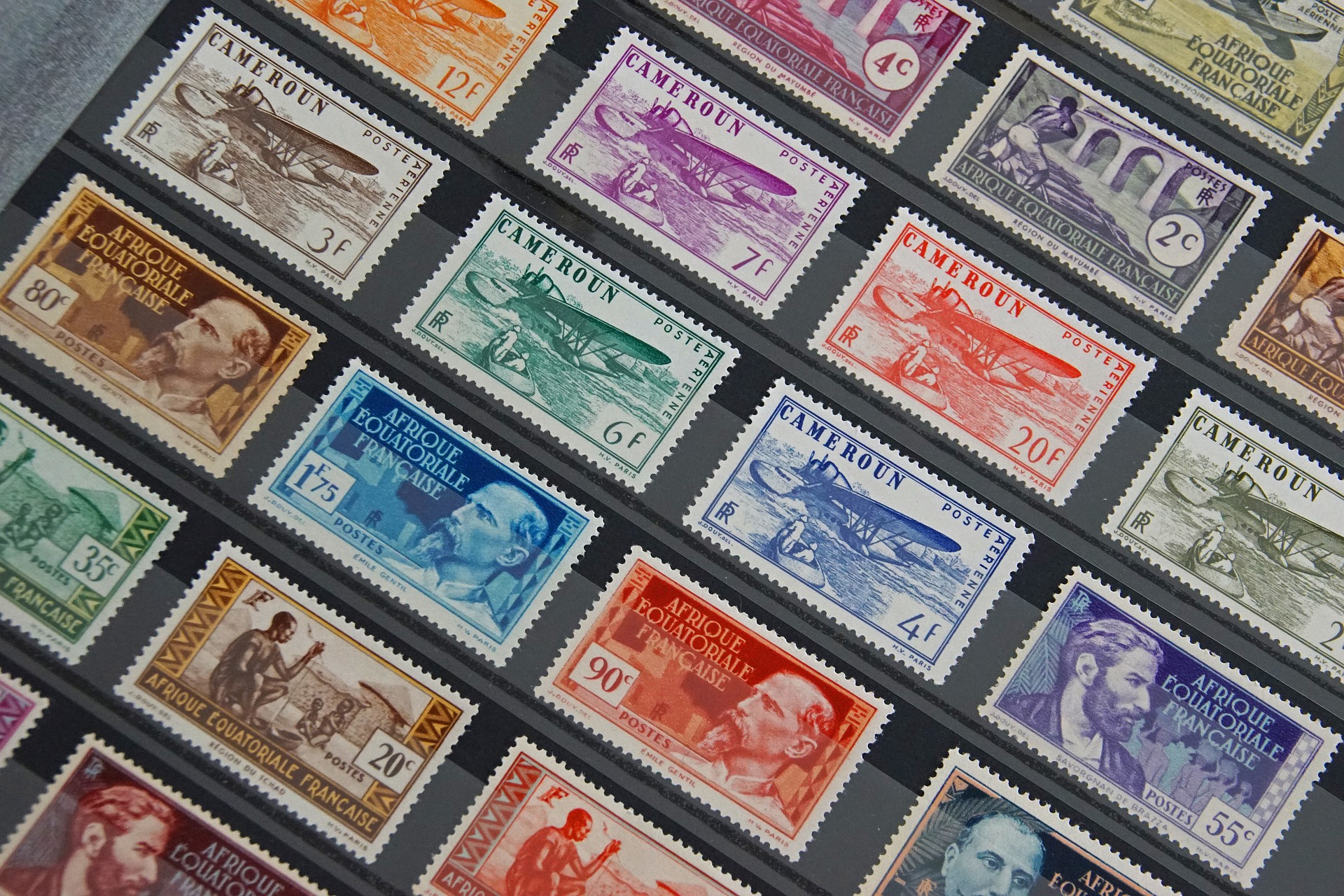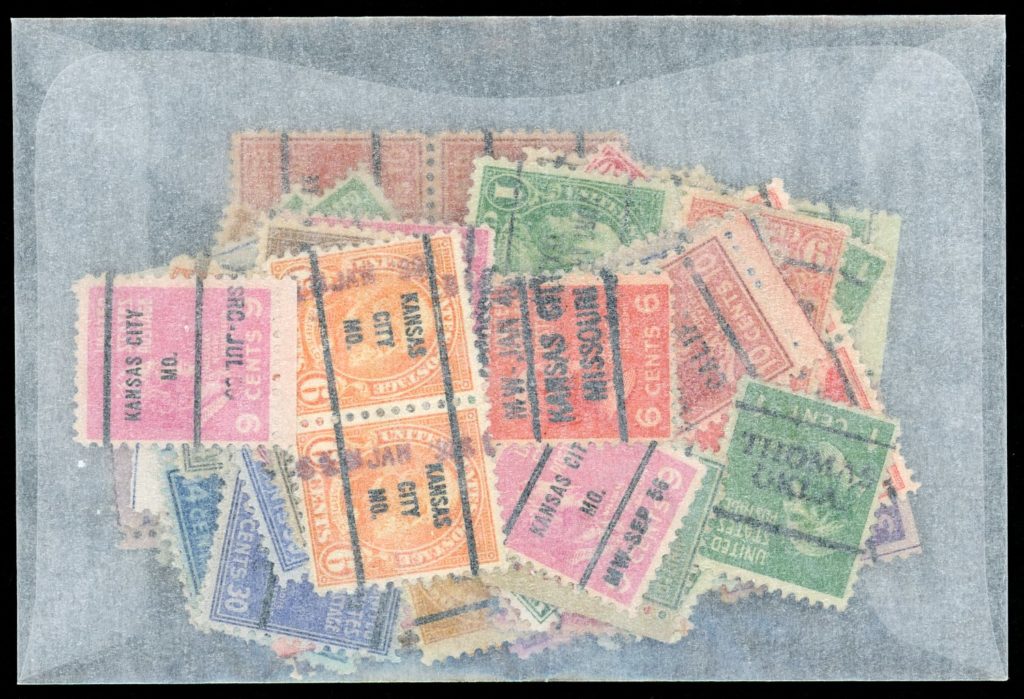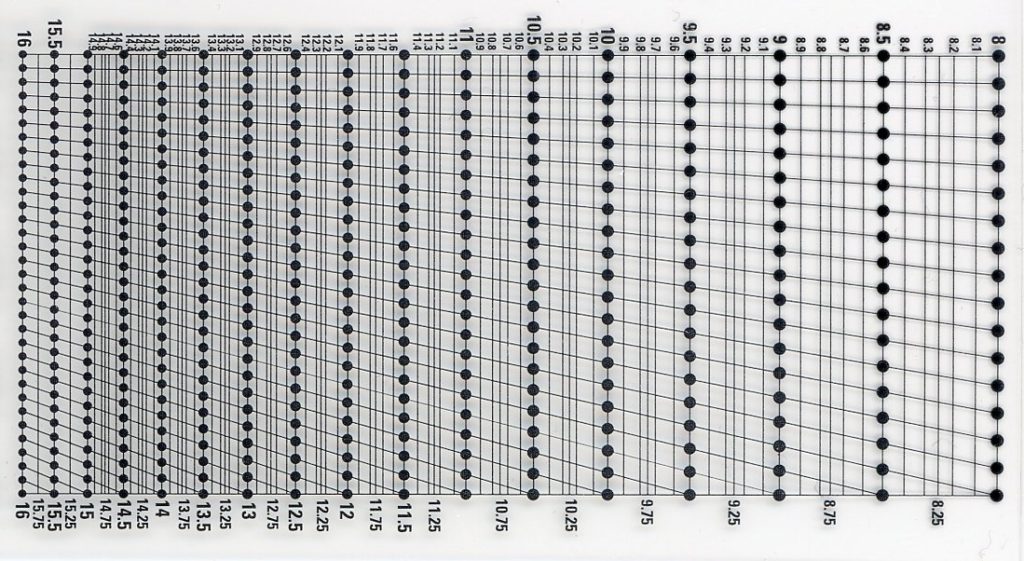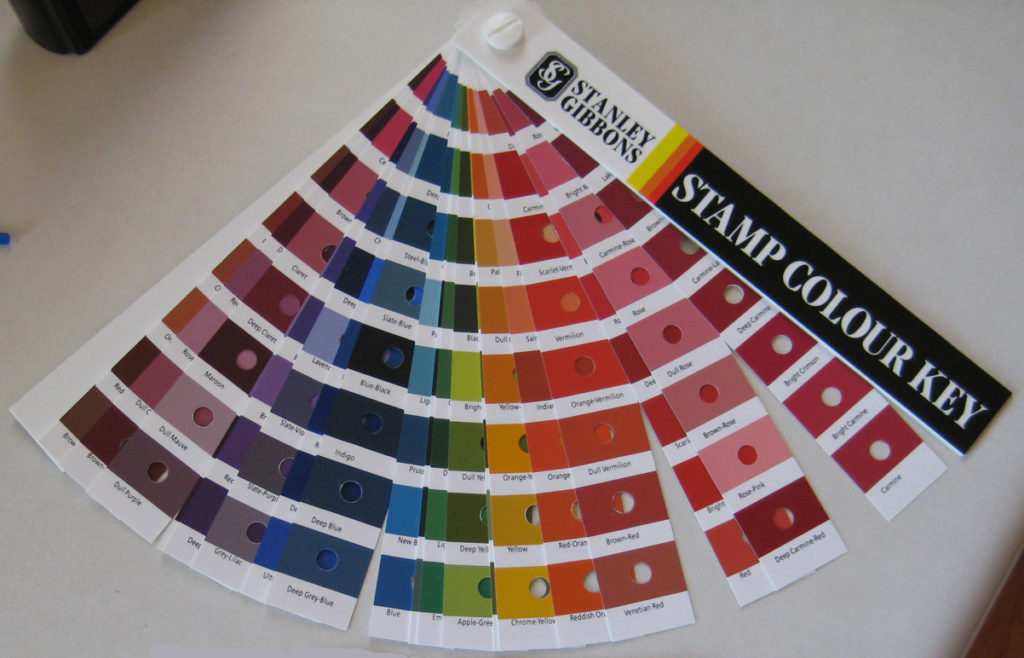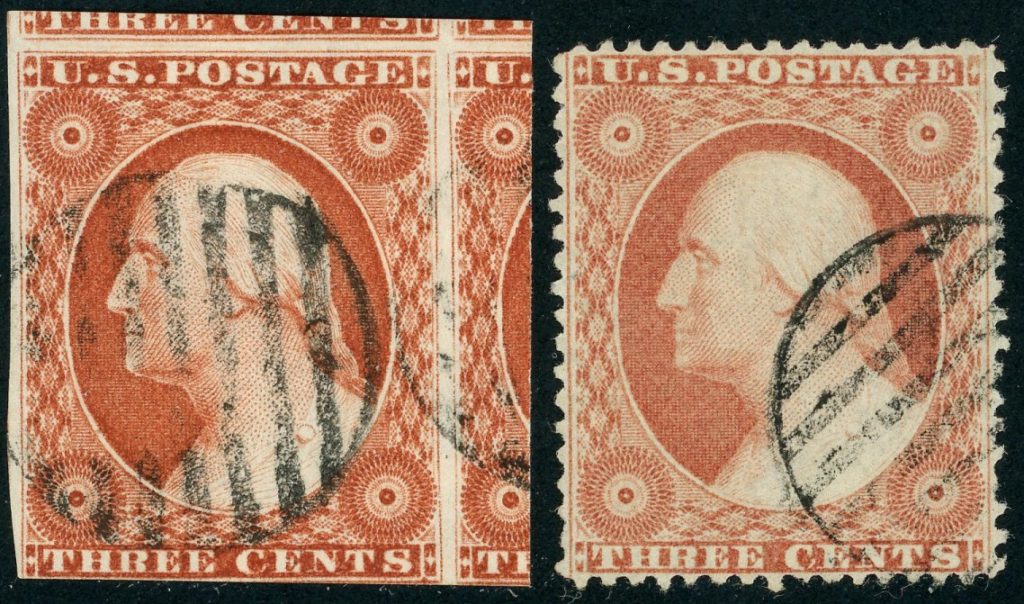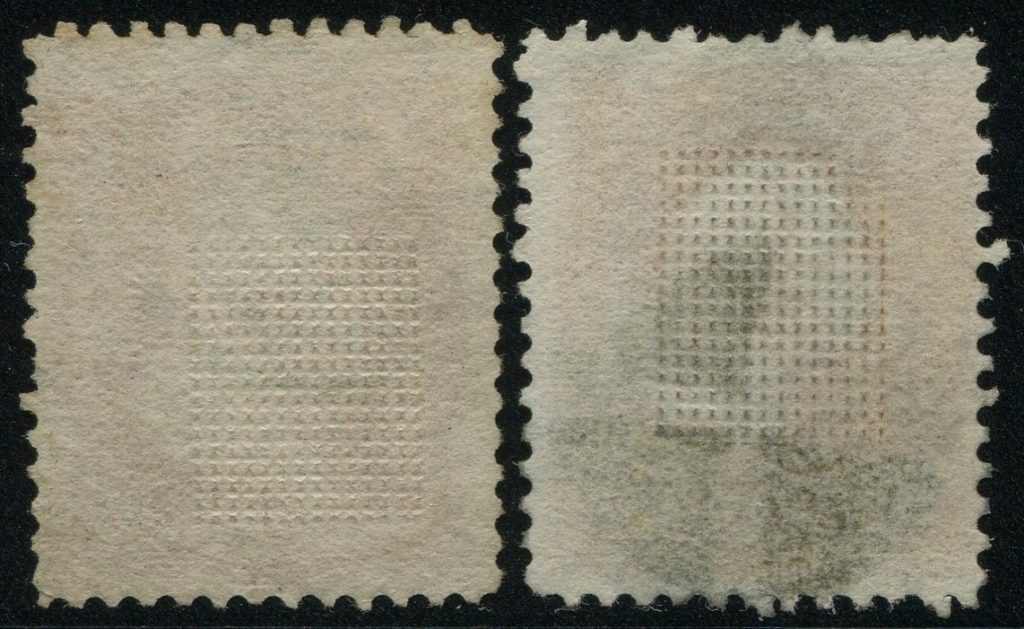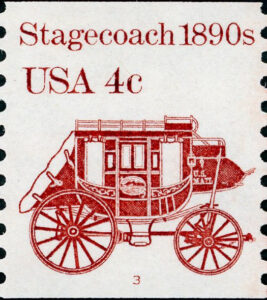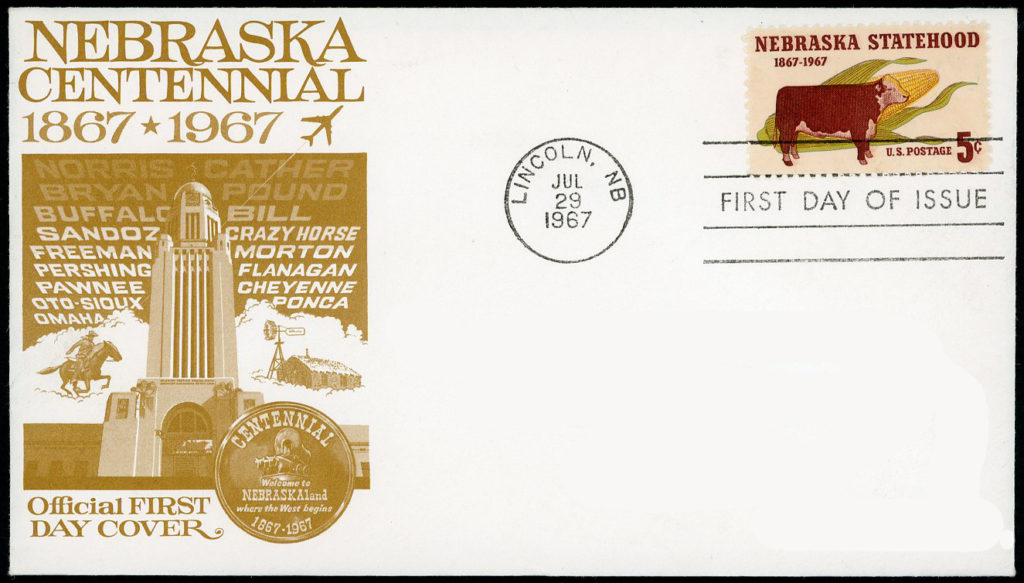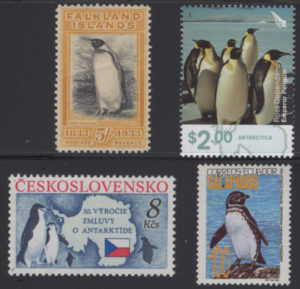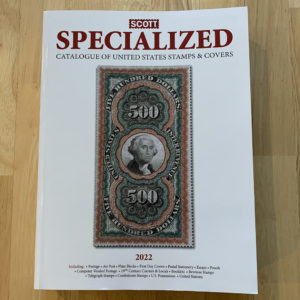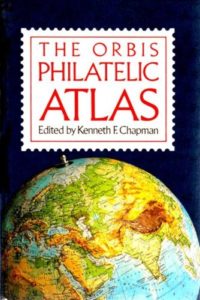If you’re new to stamp collecting, the Omaha Philatelic Society can help you learn about this great pastime. Here are a few basics to get you started.
| Header 1 | Header 2 |
|---|---|
|
A magnifier and stamp tongs are must-haves for every stamp collector. Both items come in a wide variety of styles. Stamp tongs are used for handling stamps while examining, storing, and mounting them to prevent harmful skin oils from getting on them and to prevent damage to the perforation tips. They are made with spade and pointed tip styles. Spade-tip tongs may be best for young or inexperienced hands. Pointed-tip tongs are best for precision handling, and they won’t obscure much of the stamp you’re studying. |
 |
|
A stamp album is a popular way to mount stamps for convenient viewing. Stamp albums come in many formats to suit any taste, including worldwide and for a single country. Albums can be purchased from the major album publishers which include Scott, Minkus, Harris, etc. Collectors’ tastes have diversified over the decades, and today many collectors prefer to download and print specialized album pages, or even design their own. See our Links page for more information on album resources. |
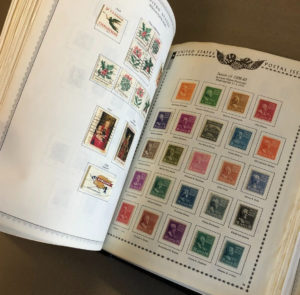 |
|
Stamp hinges are an economical way to mount used stamps on album pages. They are made of “glassine” paper with adhesive on one side, and they usually come pre-folded. The short end of the folded hinge is stuck to the back of the stamp toward the top, and the long end is affixed to the album page. When properly affixed, as shown on the illustration on the package here, the stamp can be lifted without removing it from the page. This is convenient for viewing either the back of the stamp or any illustration or annotations that may be on the album page under the stamp. The hinges are designed to be easily peeled (once the gum is dry) off of the stamp without damaging it. Using hinges to mount mint-condition stamps is not recommended because they will disturb the gum and reduce the value of the stamps. |
|
|
Stamp mounts are recommended for mounting mint stamps in albums. Using hinges to mount unused stamps with gum on the back will damage the gum and reduce the stamp’s resale value. Several manufacturers make stamp mounts, and they come in a many sizes to accommodate the wide variety of stamp dimensions. The mounts have a transparent front, and the back may be transparent or colored (usually black). Once a stamp is mounted in an album with a stamp mount, it can usually be removed and put back in the mount without damaging it, if done with care. |
|
|
Stock pages are another popular way of storing stamps. The stamps can be easily inserted into the pockets and moved around. They come in a wide variety of types, varying from one to eight pockets per page. Stock pages typically have holes punched along the side, enabling them to be put in binders. |
|
|
Glassine envelopes are made of semi-transparent paper, and are great for long-term storage of groups of stamps like duplicates. Better-quality glassine envelopes are made of acid-free, pH-neutral paper that won’t tone stamps.
|
|
|
Sometimes two stamps look alike and the only difference is the gauge of the perforations. A perforation gauge is used to measure the number of holes within two centimeters. If a stamp has 11 perforations in 2 cm, we say it’s “perf 11.” To use a perforation gauge, simply match the perforations on each side of the stamp with the markings on the gauge. The sliding scale on a precision gauge like the one shown here will enable finer measurements for stamps with odd perforation counts like 10.5 or 9.7. Many stamps will have perforations on the top and bottom that differ from those on the sides. These are called compound perforations. When describing compound perforations, the gauge at top is given first, then the sides. So if a stamp has gauge 11 perforations on the top and 10 on the sides, the stamp is described as being perf 11 X 10. |
|
|
Color variations on some stamps can result in multiple catalog numbers or minor listings under a single catalog number being assigned to a single stamp issue. These multiple catalog numbers or minor listings can correspond to significant differences in stamp valuations. Many manufacturers have produced stamp color guides to try to help distinguish between these color variations. However, this is a challenging task for the manufacturers, with so many different color names assigned by U.S. and foreign stamp catalog publishers.
|
|
|
Some stamps are issued without perforations, and these are referred to as imperforate stamps. Some early Imperforate stamps were printed close together, and they were often hastily cut from sheets. Finding these stamps with four margins can be challenging and rewarding. Perforations were added to U.S. Government-issued stamp sheets beginning in 1857. |
|
|
Coil stamps are sold in rolls rather than sheets. They are convenient for dispensing stamps from vending machines. For organizations that mail in high volumes, coils of 500, 1,000, or even 10,000 stamps can be used to quickly affix stamps to envelopes from dispensers. Coil stamps have straight edges on two sides, and can be perforated vertically or horizontally. Some collectors collect coil line pairs; which have a joint line printed every so often between stamps.
|
|
|
Some stamps were printed on watermarked paper, and these watermarks are used to help identify the catalog number of the stamp. In some cases, whether a stamp has a watermark, and what type of watermark it has, can significantly affect its value. Detecting watermarks on stamps, and identifying the type of watermark, such as single-lined or double-lined letters like with many U.S. stamps, can be difficult. Using a black watermark tray and specialized watermark fluid is the most popular way of viewing watermarks. This specialized fluid is safe for most stamps and will not affect the gum on mint stamps. Lay the stamp face-down in the tray, and put a little watermark fluid on the stamp, and the watermark (if any) should become visible. The fluid will evaporate quickly, and the stamp will be dry once it does. There are other high-tech (and higher-cost) devices such as the Signoscope Watermark Detector that don’t require watermark fluid. |
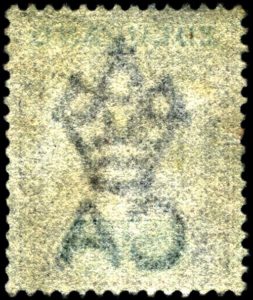 |
|
Some early U.S. stamps (1867 to 1871) had grills impressed or embossed into the paper after they were printed to discourage the re-use of stamps. The grill is a rectangle of tiny pyramids added to break the paper fibers so that the cancel ink would soak into the paper, making the cancel harder to wash off. The dimensions of these grills, measured in millimeters or number of points in each row, are used to help identify what catalog number the stamp is. |
|
|
Plate block collecting is a popular specialty which involves collecting blocks of four or more stamps with the plate number in the margin selvedge. Special albums or album pages devoted only to plate blocks are available. |
|
|
Plate numbers were first intentionally printed on U.S. coil stamps in 1981, and these are referred to as plate number coils (PNCs). Prior to 1981, plate numbers appearing on U.S. coil stamps were intended to be printed in the margin selvedge only, but could appear on coil stamps cut off-center. The 1982 Stagecoach coil stamp shown here has the plate number 3 printed at the bottom. |
|
|
A First-Day Cover (FDC) is an envelope or post card bearing a stamp which is postmarked with the date of the stamp’s issue. FDCs often include a commemorative illustration, called a cachet, usually to the left of the stamp and postmark. Most FDCs have the words “FIRST DAY OF ISSUE” integrated into the cancellation.
|
|
|
Topical stamp collecting is very popular. Topical collectors generally arrange their collections by the topic presented on the stamps. The number of subjects philatelists focus on is practically endless, including astronomy, birds, coins, flowers, geology, lighthouses, maps, paintings, penguins, ships, space, sports, etc. There are many stamp societies devoted to topical stamp collecting. See our Links page for more info. |
|
|
Philatelic literature plays an essential role in stamp collecting. Stamp catalogues provide descriptions, dates of issue, illustrations, and market values. Catalogues assign sequential numbers to stamps, generally in order of when they were issued. These catalog numbers are useful for assembling collections and compiling inventories of collections. Some of the major stamp catalogs providing coverage of worldwide stamps are Scott, Michel, and Stanley Gibbons. |
|
|
Identifying country of issue for worldwide stamps can be a challenging and rewarding learning experience. Stamp atlases like the Orbis Philatelic Atlas and the Scott Stamp Atlas can help collectors navigate the issuing countries and the variety of languages appearing on stamps.
|
|
